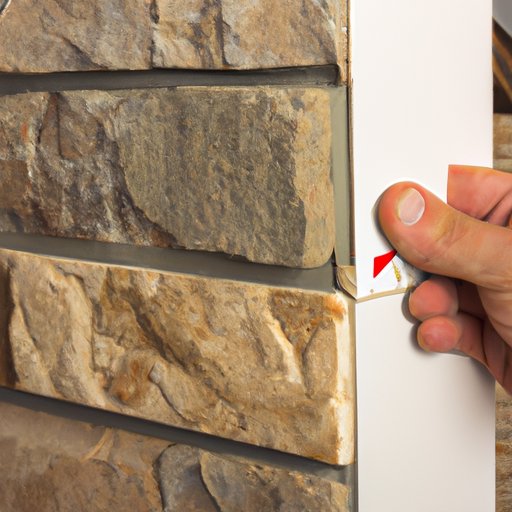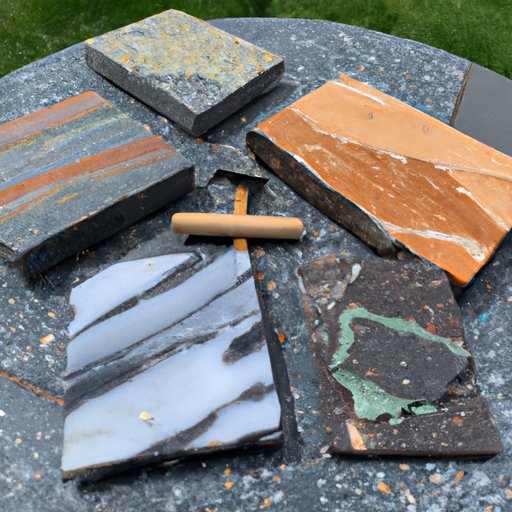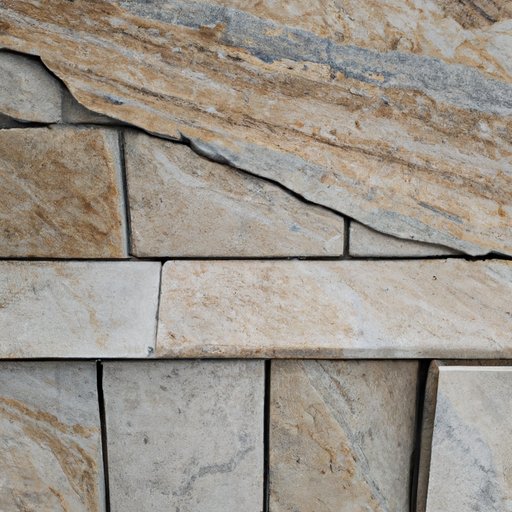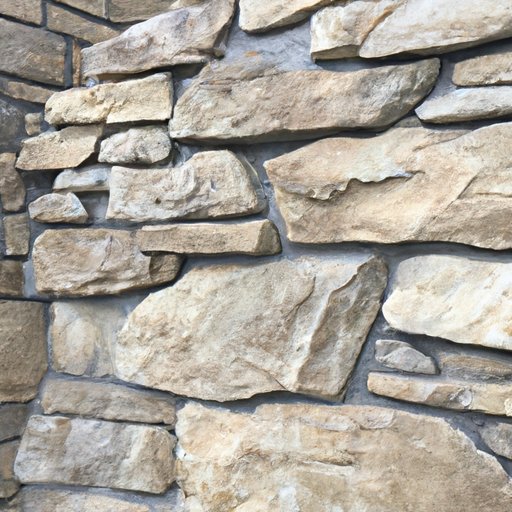Introduction
Cultured stone is an artificial stone product made from concrete, pigments, and aggregates. It’s designed to look like natural stone but is much easier to install and maintain. This makes it a popular choice for homeowners who want to add a touch of elegance to their homes without the hassle of traditional stone installation.
Benefits of Cultured Stone
There are many advantages to using cultured stone in your home. According to a survey conducted by the National Association of Home Builders, 70% of builders believe that manufactured stone veneer adds value to a home. In addition, cultured stone is cost-effective and easy to install compared to real stone, making it a great option for DIY projects. It also requires minimal maintenance and is resistant to weathering, making it a great choice for outdoor spaces.

How to Install Cultured Stone in Your Home
Installing cultured stone in your home is relatively simple. The first step is to prepare the surface where you want to install the stone. This includes removing any existing paint or coatings, as well as cleaning the surface with a scrub brush and water. Once the surface is clean and dry, you can begin installing the stone.
The next step is to select the right adhesive for your project. There are several types of adhesives available, including latex, acrylic, and epoxy. Each type has its own advantages and disadvantages, so it’s important to do your research to find the best one for the job. After the adhesive has been applied, you can begin installing the stone.
When installing the stone, make sure to lay it out in a pattern that you like. You can use spacers to ensure the stones are evenly spaced. Once the stones are laid out, press them firmly into the adhesive and allow the adhesive to set. After the adhesive has set, you can grout the joints between the stones to give the finished product a polished look.
Design Ideas for Using Cultured Stone in Interior and Exterior Spaces
Once you’ve installed the cultured stone, you can start thinking about how to use it in your home. There are numerous design options for both interior and exterior spaces. Here are some ideas for using cultured stone in your home:
Kitchen Backsplashes
Using cultured stone to create a backsplash in your kitchen is a great way to add texture and visual interest to the space. You can choose from a variety of colors and textures to create a unique look.
Fireplaces
Adding cultured stone to your fireplace will give it a timeless look that will never go out of style. Choose from a wide range of colors and textures to create the perfect look for your living room.
Outdoor Patios
Cultured stone is a great choice for outdoor patios because it is durable and low maintenance. You can create a beautiful outdoor area with a variety of colors and textures to match your home’s exterior.
A Guide to Different Types of Cultured Stone
When choosing cultured stone for your home, it’s important to understand the different types of stone available. Here are some of the most popular types of cultured stone:
Limestone
Limestone is a sedimentary rock composed of calcium carbonate. It is a popular choice for cultured stone because of its durability and resistance to weathering. Limestone is available in a range of colors, including gray, tan, and cream.
Travertine
Travertine is a type of limestone that is known for its interesting patterns and textures. It is available in a variety of colors, including white, tan, and beige. Travertine is a popular choice for cultured stone because of its unique look and feel.
Marble
Marble is a metamorphic rock composed of recrystallized carbonate minerals. It is available in a range of colors, including white, black, and pink. Marble is a popular choice for cultured stone because it is elegant and timeless.

DIY Projects Featuring Cultured Stone
If you’re looking for a creative DIY project, consider using cultured stone. Here are some ideas for projects you can do yourself:
Garden Paths
Create a unique garden path by laying down cultured stone pavers. This is a great way to add a touch of elegance to your outdoor space.
Wall Art
Create a unique piece of wall art by cutting cultured stone into shapes and attaching them to a canvas. This is a great way to add a personal touch to your home.
Fountains
Create a stunning fountain by stacking cultured stone blocks on top of each other. This is a great way to add a touch of tranquility to your outdoor space.

Understanding the Durability of Cultured Stone
Cultured stone is a highly durable material that is designed to last for years. It is resistant to weathering, making it a great choice for outdoor spaces. It also requires minimal maintenance, making it a great choice for busy homeowners. Additionally, cultured stone is fire-resistant, making it a safe choice for fireplaces and other areas of the home.
The Pros and Cons of Choosing Cultured Stone for Your Home
As with any building material, there are pros and cons to using cultured stone. According to a study by the University of Wisconsin-Madison, the main benefits of using cultured stone include its affordability, ease of installation, and low-maintenance requirements. However, the study also noted that cultured stone may not be as durable as natural stone in extreme weather conditions.
Conclusion
Cultured stone is a great choice for homeowners who want to add a touch of elegance to their homes. It is cost-effective and easy to install, making it a great choice for DIY projects. It is also highly durable and requires minimal maintenance, making it a great choice for both interior and exterior spaces. While there are some drawbacks to using cultured stone, such as its lack of durability in extreme weather conditions, it is still a great option for homeowners who want to add beauty and value to their homes.
(Note: Is this article not meeting your expectations? Do you have knowledge or insights to share? Unlock new opportunities and expand your reach by joining our authors team. Click Registration to join us and share your expertise with our readers.)
